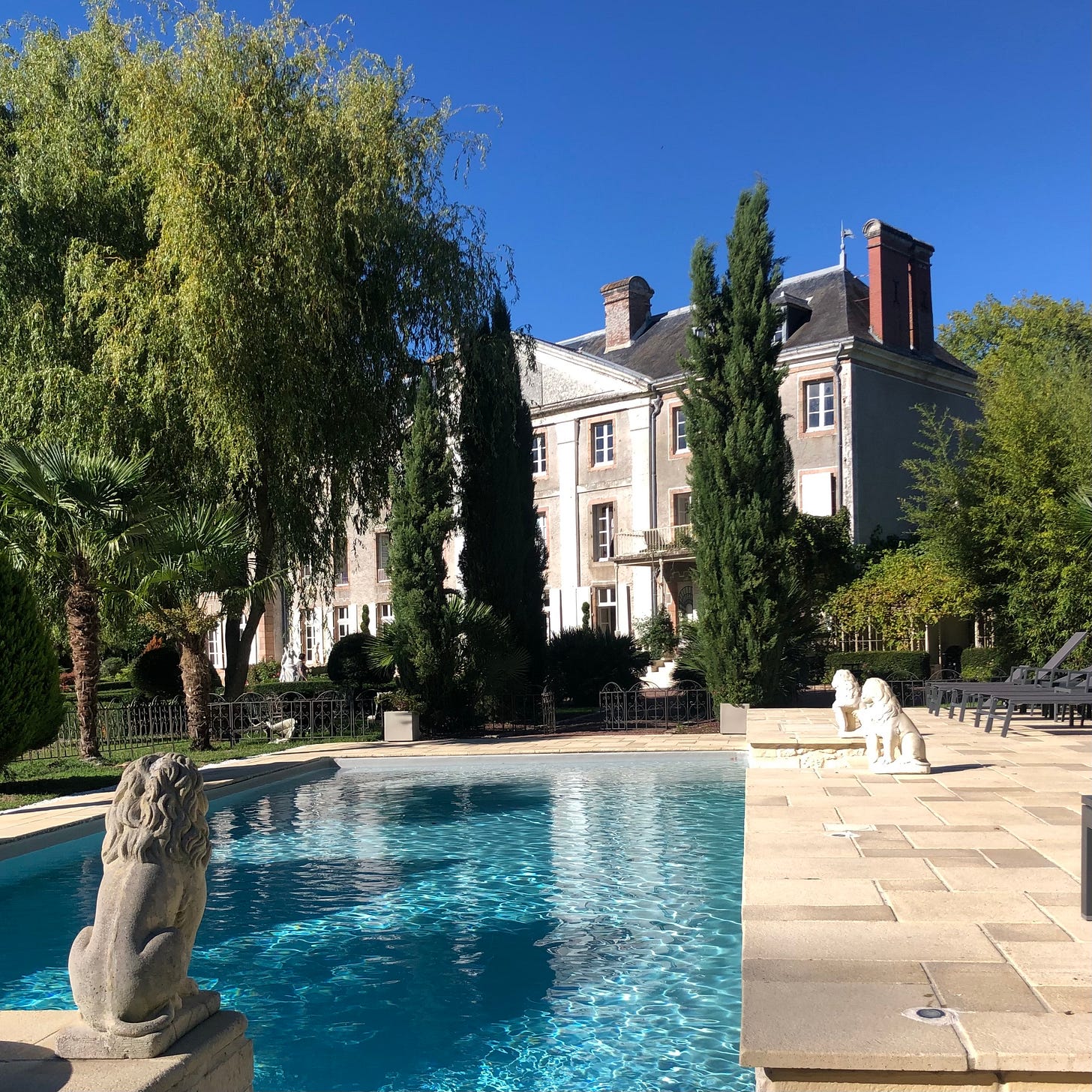The summer lasts longer in châteaux country. I'm sitting by a turquoise, rectangular pool whose thirst is quenched by a fountain that falls from an elevated Jacuzzi. The water cascades in a single sheath. The pool laps itself up. I am guarded by a pride of lions made of white stone. They sit passively beneath a cooing pigeon sky.
I am at a château in the…
Keep reading with a 7-day free trial
Subscribe to if not, Paris to keep reading this post and get 7 days of free access to the full post archives.




